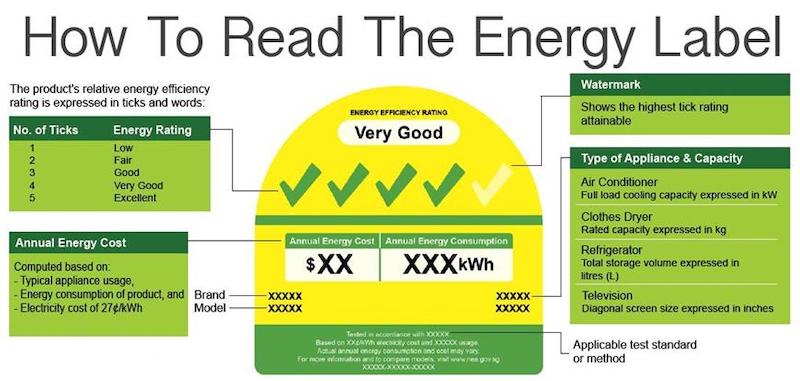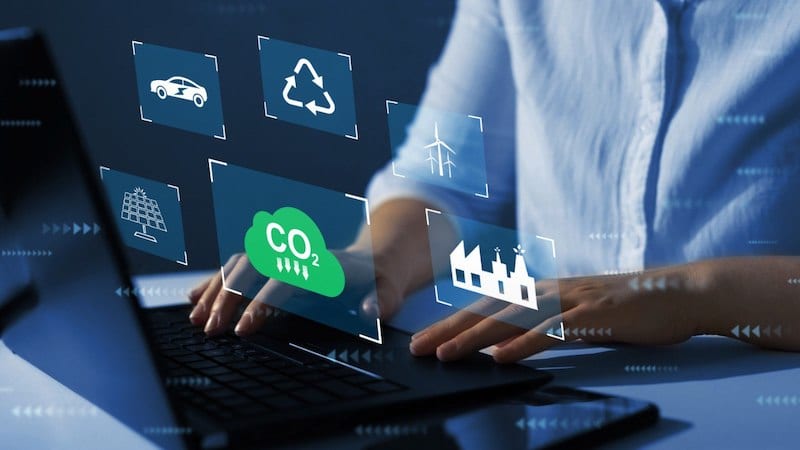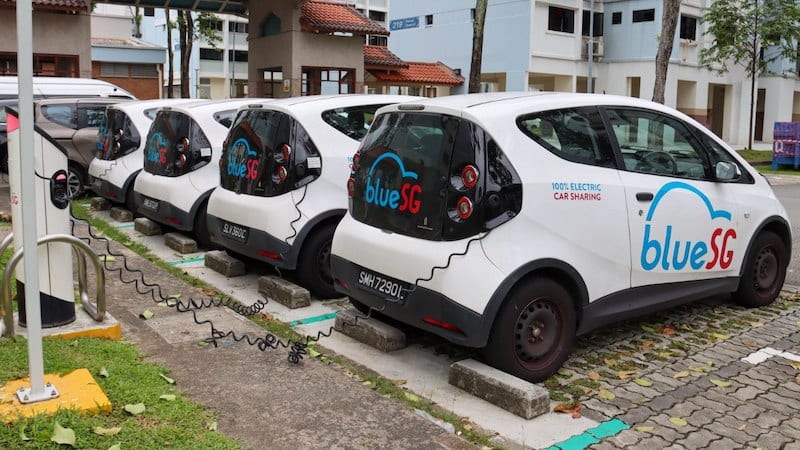Simple ways to run your business more sustainably

Sustainability is the topic of the moment for businesses in every industry. 2022 was a marked year for climate action, as the United Nations Climate Change Conference 2021 (COP26) in November 2021 saw over 140 member countries pledge to meet net-zero emissions in the 21st century.
As nations all over the world are taking decisive strides towards decarbonisation, businesses are being held more accountable, while governments and investors are pushing for companies to disclose their carbon emissions.
Hopping on the sustainability train could be a major transition for many industries. But apart from conserving the planet, sustainability is asking business owners to make decisions that create long-term value for their business by considering how they operate in ecological, social and economic environments.
As sustainability is quickly gaining traction and becoming increasingly critical to building a successful business, entrepreneurs need to start adapting quickly. Achieving sustainable operations is a long-term journey, but here are some simple ways that businesses can get started:
Going green with sustainable products and services
To begin building a green business, little steps like using sustainable products or purchasing office supplies from sustainable brands can go a long way. Conserving paper and minimising the use of materials like plastics and polyester can make a huge difference in the long run.
Businesses can start small by using eco-friendly stationery. Stationery is often created using unsustainable resources such as plastics that travel around the world with a huge carbon footprint, or trees that are not replanted after being sourced to make pencils and paper.
Environmentally friendly stationery on the other hand, is constructed using recycled materials wherever possible, reusing wood pulp, recycled paper and spent grain. For instance, local stationery brand The First Green Store features products ranging from pencils made from recycled wood and biodegradable pens to mousepads recycled from tyres.
Companies can also provide reusable wares as welcome gifts for employees, and avoid supplying plastic bags to customers where possible. Alternatively, they can incentivise customers who bring along their own reusable bags through small discounts or membership card points.
Businesses can also save the earth and save costs at the same time, by switching to energy efficient appliances.
Although it may seem more economical and sustainable to maximise the use of certain electrical appliances before replacing them with energy efficient ones, older appliances typically consume more energy when they begin to lose their functionality. In comparison, new appliances that come with more energy efficient features that conserve more energy can help minimise your utility bills.

When purchasing a new appliance, pay attention to its energy label. The National Environment Agency provides a system of one to five ticks on the Energy Efficiency Rating indicated on the energy labels of electrical appliances. This tells you how much energy each appliance uses, compared to similar appliances, which can help you find products that use the least amount of energy.
Rising energy costs in recent months have made the transition towards energy efficiency more urgent than before. As part of the Singapore Green Plan 2030, the Government is actively encouraging enterprises to adopt solutions that would enable them to be more energy efficient.
The Government has since launched the Energy Efficiency Grant (EEG) for the Food Manufacturing, Food Services and Retail sectors. Through the EEG, businesses in these sectors can receive subsidies for their use of energy saving appliances, from various LED lighting; air-conditioners; refrigerators; induction cookers; water heaters and clothes dryers.
The support provided by the grant goes up to 70 per cent of qualifying costs, capped at S$30,000 per company per year. Under the LED lighting category, companies can claim up to S$500 annually.
You can check out the extended list of the products supported by the EEG on GoBusiness.
In the age of e-commerce, businesses today use websites and online platforms to conduct sales. Running a website, however, is energy-intensive. According to Web Neutral Project founder Jack Amend, powering a website produces 4,500 pounds of CO2 a year, which is equivalent to driving a new car for more than 10,000 miles. In fact, the internet produces almost as much pollution as the airline industry.
To cut down on CO2 emissions, businesses can play their part by using green web-hosting services for their website needs. Green web hosting companies purchase renewable energy credits to offset the energy used by the website, making your website operations carbon neutral, or even negative.
For instance, the GreenGeeks web hosting service purchases three units of renewable energy back into the grid for every unit of energy it uses, making their customers’ website operations carbon-reducing.
One of the oldest green web hosts, HostGator has been around since 2002, and hosts over 2 million websites worldwide. The company purchases Renewable Energy Credits (RECs) worth one megawatt-hour (MWh) of energy used per REC, and claims to offset 130 per cent of its consumption.
Sustainable office operations with the help of technology
While not all your products have to be sustainable, it is important to use your materials and appliances sustainably. Beyond cultivating good habits such as recycling, and ensuring all unused appliances are switched off, you can also leverage technology to create a more environmentally friendly office.
Optimising the office environment is a crucial step towards sustainability. After all, the built environment is responsible for almost 50 per cent of annual carbon emissions. One of the most efficient ways to achieve greener practices is through digitalisation. In addition to saving paper waste, transferring the business’s data online helps to increase visibility of data within a business team.

Technology such as the Internet of Things (IoT) creates greater connectivity between assets, giving more visibility into operations within the supply chain. For instance, Bluetooth Low Energy beacons reduce the possibility of lost parcels and inaccurate deliveries as they indicate if the correct parcel is being placed in the right truck. This allows organisations to make better decisions that ultimately support them in achieving their sustainability end-goals.
Another popular solution is the application of intelligent IoT sensory controls in office heat and light settings. Companies can continuously measure the temperature and movement in a room by installing sensors coupled with an IoT platform. The sensors detect the presence of anyone in the room and adjust lighting accordingly, dimming or switching the lights off when no movement is detected for a certain period. They can also adjust the heating and air-conditioning according to the presence of people in the room. Minimum and maximum temperatures can also be fixed according to the employee preference, the weather and the season.
More advanced sensor systems also detect daylight to calculate exactly how much light a lamp needs to provide. This way, it can be brighter when necessary for employees to work well, and dimmer in situations where intense lighting may be unpleasant. Automaker giant Ford has even implemented apps for their employees to control each office lamp individually in their factories in Cologne.
With the help of IoT solutions in the office, companies can analyse the utilisation of rooms and match the space to actual needs, avoiding unnecessary rental or utilities costs. This can reduce energy consumption for lighting by up to 75 per cent, and for heating, air-conditioning and ventilation by up to 35 per cent.
Encouraging sustainable transport and deliveries
One of the major sources of pollution in Singapore is its land transport system. As the country’s third largest source of carbon emissions, the industry accounts for 15 per cent of the nation’s emissions.
As such, in the past year, Singapore has set a new target of reducing land transport emissions from the 2016 peak of 7.7 million tonnes by 80 per cent by 2050. Plans are underway for a cleaner energy bus fleet and the Government aims for all new car and taxi registrations to be of cleaner-energy models from 2030.
Businesses and employers can do their part as well by providing public transit commuter benefits for employees or travel allowances to encourage employees to use public transport, thus cutting down the transport emissions of travelling to work.
Over the past year, many countries have sped up their adoption of electric vehicles. Logistics and transport companies are also electrifying their fleets to keep up with the target of decarbonising their industries.
For businesses that own their own transport fleets, the most sustainable thing they can do is to switch to electric vehicles. Investing in brand new electric vehicles, however, is a costly endeavour that may not fit the budget that smaller businesses have in mind. Furthermore, there are also additional costs such as EV insurance and maintenance, as well as having a sufficient charging infrastructure to sustain your operations.
In these cases, it might be more cost-efficient to work with logistics providers that already have the resources prepared to help you curate a more sustainable supply chain. This opens up more environmentally friendly ways for you to run your business.
For instance, if you are shipping your products overseas, opting for sustainable fuel helps to offset the carbon that the logistics company produces during each delivery. Business owners can also consider opting for container load shipping, which means combining shipping options with other companies. Buying less container space means maximising resources, making it more cost-efficient for businesses as well.
For small businesses running on a tight budget, electric transportation and opting for sustainable fuels may still be too expensive at present, as even rental and logistics companies tend to charge higher costs for vehicles using sustainable fuels and EVs.
Some smaller businesses may only need to make local deliveries on an ad hoc basis. In this case, there are plenty of affordable electric vehicle options available for them as well. For instance, ride sharing and delivery services such as Grab and Gojek now have EV options for customers to choose from. The BlueSG electric car rental system is also a choice for business-owners who want to make sustainable last mile deliveries on a budget.

Another inexpensive way for businesses to offer more sustainable logistics is to use packaging made from biodegradable and recyclable materials. Brands can allow customers the choice to opt-out of using any unnecessary packaging for their purchases or selecting more eco-friendly options for packaging, thus saving any unnecessary waste from being produced.
Last but not least, as consumers get increasingly attuned to environmental matters, sustainability marketing is a key practice to better connect with a global customer base. Hence, when brands strengthen their commitments to sustainability, increasing brand transparency and communicating their sustainability plans will allow customers to better understand the business’s priorities in terms of reducing environmental impact.
While sustainability is a major challenge, there are support schemes available to help you make your first step towards a more sustainable future. The Energy Efficiency Grant (EEG), was launched as part of Singapore Green Plan 2030 to encourage enterprises to adopt more sustainable and energy efficient solutions.
With EEG, businesses in the relevant sectors will be able receive reimbursement for their purchase of energy efficient equipment. You can find out more about EEG or submit your application on GoBusiness.
This article is accurate as at 22 Mar 2023

